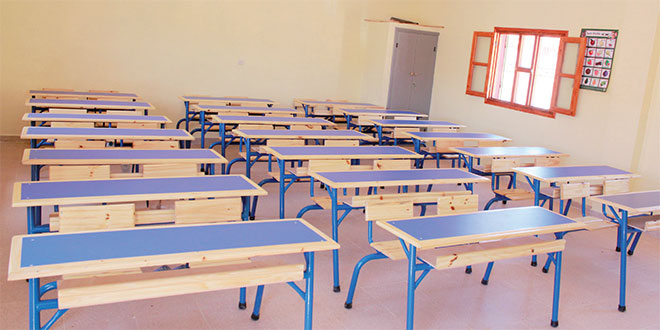The report of the Court of Auditors, recently presented to the Parliament by Mrs. Zineb El Adaoui, President of that Court, probably demoralized Chakib Benmoussa, particularly concerning the issue of human resources.

The Minister of National Education is certainly aware of all this, but the institutional reminder and the need to debate these issues at the level of the two Chambers of the Parliament add new concerns to the Minister.
In any case, the staff of the education sector represented in 2022 nearly 55% of all the civil servants of the State and whose number rises to 311,943. Expenditure of the staff of the Ministry and of the Ministry’s regional academies reaches 50 billion Dirhams (USD 5 billion), namely 80% of the sector’s overall budget and 3.9% of GDP.
The Court of Auditors looks at the teachers recruited by the regional academies. There are 83,422 teachers and barely 4.28% of the first five waves of teachers have undergone a professional skills examination. For Mrs. Zineb El Adaoui, transfers of National Education staff (from one city or school to another) are among the factors of educational instability within schools.
Thus, teachers, executives of the regional academies, who benefited from the transfers (from one city or school to another) for 2019, 2020, and 2021, were 53,683 in number, which corresponds to 63% of all of these teachers estimated at 85,000. This contributes to pedagogical instability in schools that have recorded high rates of transfers of teachers, knowing that sometimes the duration of their exercise in a region does not exceed one year.
This wave of staff transfers mainly concerned rural areas, particularly primary schools, whose teachers represented 64% of the total of teachers who moved from place to another, which impacts the level of education of these children.
An evil never comes alone. Indeed, this shortcoming is accentuated by absenteeism in the education sector, considered as one of the main factors that negatively and directly impact the school calendar of students. There has thus been a significant increase in the number of unjustified absences by teachers, to the point that they increased by 77% during the 2016-2017 and 2020-2021 academic years, which further aggravates the situation. The negative impact lies in the evaluation system adopted by the ministry and which is mainly based on seniority in the promotion of teachers in the absence of any evaluation of profitability. The criteria retained for the teachers’ scorecard concerning productivity, discipline, research, and innovation, remain ambiguous and difficult to apply in the absence of a system allowing individual monitoring of each civil servant.
Mohamed CHAOUI


























